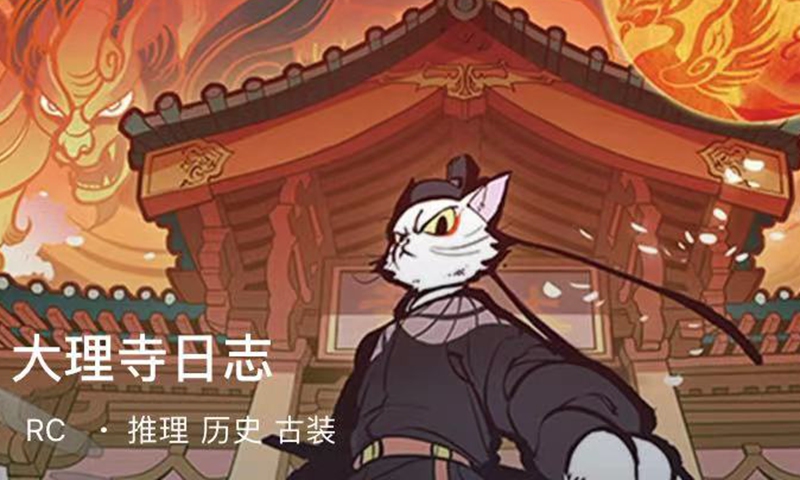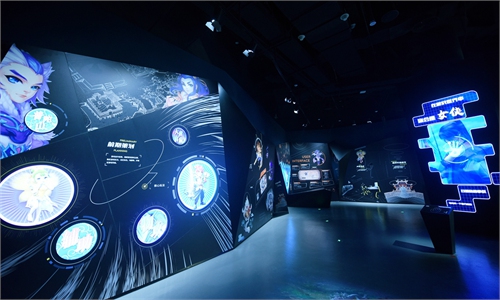ARTS / COMICS
Chinese animation is leading a unique road

White Cat Legend Photo: Screenshot of iQiyi
Masako Furuichi, a Japanese teacher at the Foreign Languages School of Peking University, was shocked when she saw the headline of her student's dissertation: Japanese anime has begun to decline. She felt that Chinese anime has shaken the status of Japanese animation in China.
"The development of Chinese animation in recent years has been very fast," Furuichi told the Global Times.
She mentioned as an example the Chinese animation The Legend of Luo Xiaohei, released in Japan on September 20, 2019, which has quickly won the hearts of Japanese audiences. The film has taken more than 560 million yen (about $ 5 million) at the box office, setting a record for Chinese animation films overseas. Many Japanese fans expressed their appreciation for the film on social media and tried to purchase some cultural products from China. Some even started to learn Chinese.
Not only Japan, but Hollywood also turned its attention to Chinese comic books for inspiration. It was confirmed that the Chinese comics Zombie Brother will hit the big screen in the action comedy film New York Will Eat You Alive.
"As China is developing at a soaring speed, animation, as a small branch of Chinese culture, will surely improve against the social background," Shang You, director of China's 2020 anime hit, White Cat Legend, told the Global Times.
Three historical stages
According to Furuichi, Japanese anime has experienced three historical stages in China since the 1980s. Japanese comics represented by Astro Boy have been widely favored by young Chinese.
Around the year 2000, an overwhelming number of Japanese comics, including Detective Conan, Slam Dunk and Sailor Moon pushed the second stage of Japanese anime in China.
In 2010, with the popularization of the internet, many Japanese animations gained wide exposure on Chinese social media especially on Bilibili, a Chinese video sharing website focused on animation, comics and games (ACG).
By 2004, Chinese TV stations opened channels for children to showcase local TV programs. At the same time, the broadcasting of foreign animations was restricted which brought some challenges of the Japanese anime.
Furuichi pointed out that the popularity of Japanese animation in China emerged as a supplement of cultural content during the development of China's economy. However, as more choices flooded the Chinese entertainment market, including dramas from Europe and South Korea, as well as K-pop, the Japanese ACG culture gradually fell into disfavor among the Chinese youth. Meanwhile, the rise of Chinese animation has stirred a stronger interest among the local anime fans who have started to show their full support.
A unique road
Just like the three-dimensional animation in Japan which learned from Disney and Hollywood in the US and later developed special characteristics that fit the country, Chinese anime was also first inspired by Japanese anime. However, China is currently leading a unique road that is different from the ACG culture in Japan and in Western countries.
"Chinese culture is profound and we, creators, as native Chinese, could better understand the ancient civilization with 5,000 years of history, than the Japanese creators," said Shang.
He pointed that the boom of Chinese ACG can be seen on the popularity of local ACG products among the young generation.
According to industry data, in 2017 the sales of cultural products related to Chinese animation accounted for 14.02 percent of the total animation products sales. By the first half of 2019 it rose to 38.45 percent, a two-fold increase in two years.
However, both experts denied that Japanese animation has lost its glorious advantage.
"It does not make sense to conclude that Japanese animation is declining because of the boom of Chinese animation. I think the industry in Japan is also experiencing a new change in a fast developed society and I don't think Chinese and Japanese animation can be comparable as the two have different cultural backgrounds," said Shang.
"In the future, Chinese animation should face the challenge of surpassing itself, just like the film Ne Zha, which still created such a great result due to its new content," said Shang.
Ne Zha, a 2019 Chinese 3D computer animation, earned 5 billion yuan, becoming China's all time third highest box-office hit, according to China's ticketing platform Maoyan.
Furuichi mentioned that staff in the Japanese animation industry are poorly paid and they basically follow this career for their passion which is difficult to sustain for a long time. This is also one of the reasons that hinder the development of Japanese animation. In contrast, China's situation is much better.
"I feel that China is studying and absorbing the advantages of Japanese animation and there is a passion for creating works beyond Japanese animation. However, it will take some time for China to go to the world as a mature animation country," said Furuichi.




